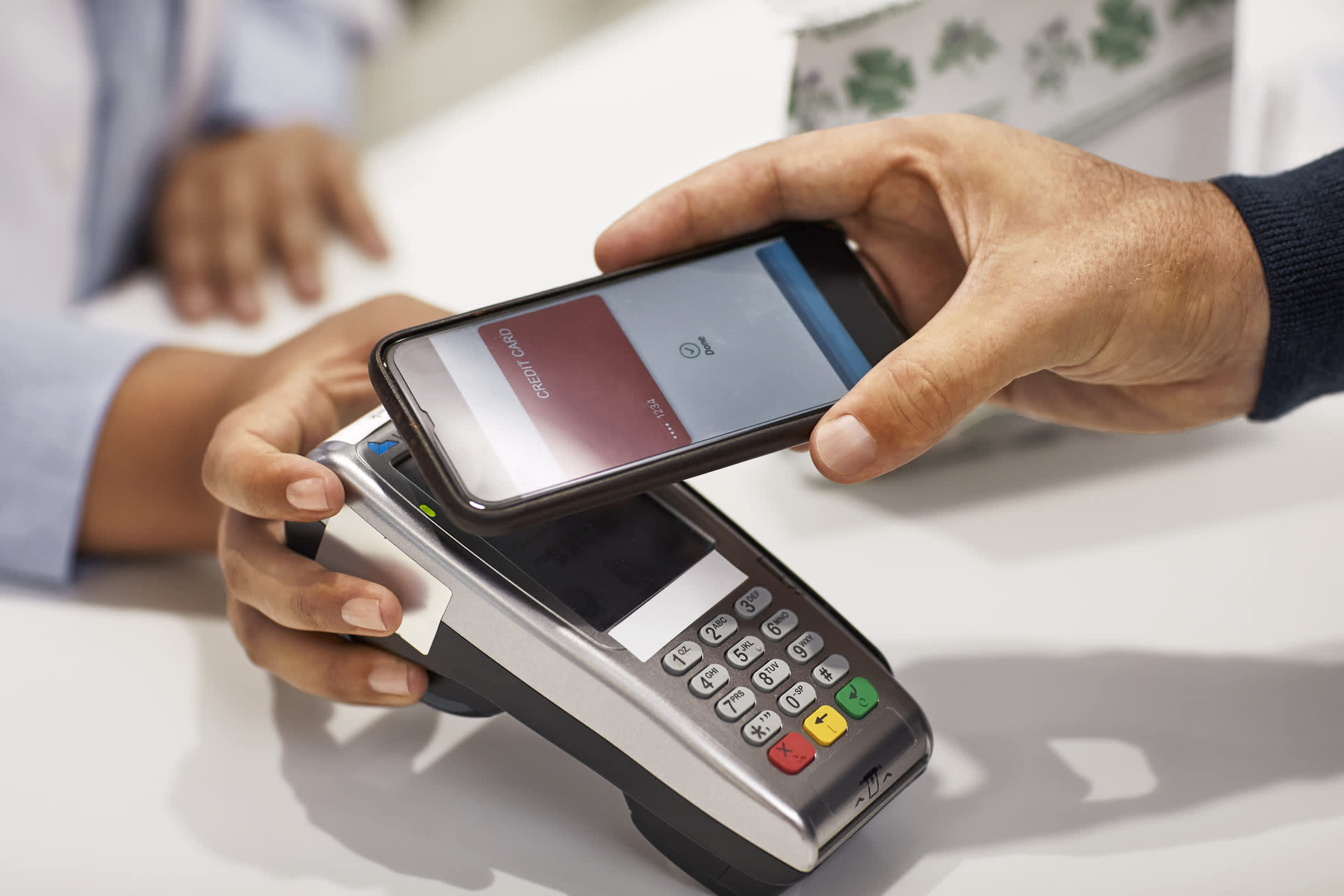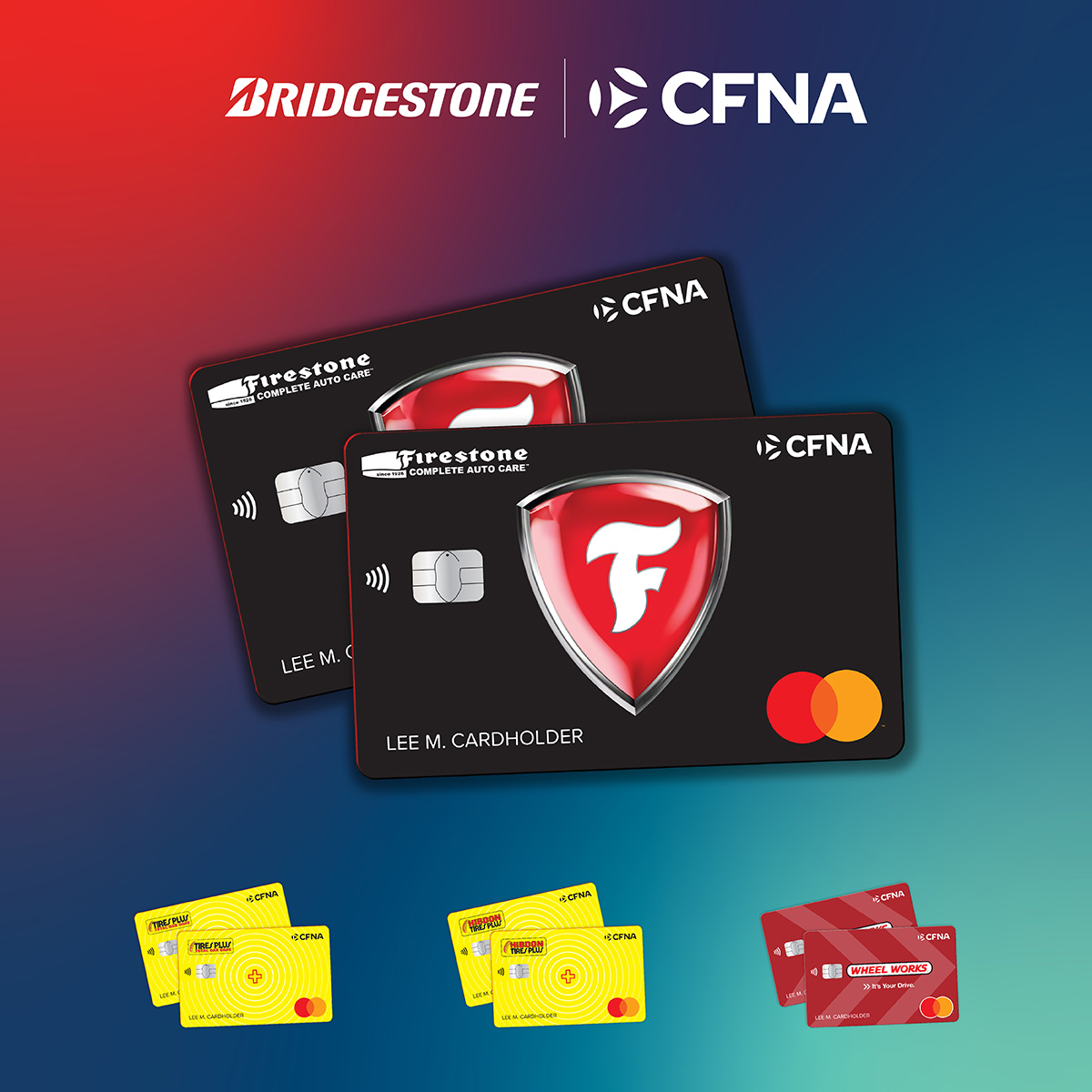Home>Finance>How To Accept Credit Card Payments As A Contractor


Finance
How To Accept Credit Card Payments As A Contractor
Published: October 24, 2023
Learn how contractors can easily accept credit card payments for their services. Improve your finance management and streamline your contractor business with secure online payment options.
(Many of the links in this article redirect to a specific reviewed product. Your purchase of these products through affiliate links helps to generate commission for LiveWell, at no extra cost. Learn more)
Table of Contents
- Introduction
- Choosing a Payment Processor
- Setting Up a Merchant Account
- Selecting a Payment Gateway
- Integrating Payment Tools
- The Importance of Security
- Understanding Fees and Costs
- Accepting Credit Card Payments Online
- Accepting Credit Card Payments In Person
- Offering Recurring Billing Options
- Mobile Payment Solutions
- Ensuring Compliance and Privacy
- Providing Excellent Customer Service
- Conclusion
Introduction
As a contractor, offering your clients the option to pay by credit card can greatly enhance the convenience and flexibility of your business. Whether you specialize in construction, home improvement, or any other contracting services, accepting credit card payments can help you streamline your invoicing process and get paid faster. In this article, we will explore the various steps involved in accepting credit card payments as a contractor and how you can optimize this process to better serve your clients.
Choosing to accept credit card payments can provide numerous advantages for contractors. First and foremost, it can improve cash flow by allowing clients to pay immediately, rather than waiting for checks to clear. Additionally, accepting credit cards can attract more customers, as many prefer the convenience of paying by card rather than using cash or writing a check. This payment method can also help you keep track of transactions more efficiently, saving you time and reducing administrative tasks.
However, before you can start accepting credit card payments, there are several key steps you need to take. These include choosing a payment processor, setting up a merchant account, selecting a payment gateway, and integrating the necessary payment tools into your existing systems. Each of these steps requires careful consideration to ensure a smooth and secure payment process for your clients.
In addition to the technical aspects, it is essential to understand the fees and costs associated with accepting credit card payments. While this payment method offers significant benefits, there are always costs involved. By understanding these fees, you can make informed decisions and select the payment solutions that align with your business needs and budget.
Throughout this article, we will explore various methods of accepting credit card payments, including online and in-person options, as well as recurring billing and mobile payment solutions. We will also discuss the importance of security and compliance to protect both your clients’ sensitive information and your business reputation.
Lastly, we will emphasize the importance of providing excellent customer service when accepting credit card payments. Ensuring a smooth and hassle-free payment experience for your clients will not only increase customer satisfaction but also help you build long-term relationships and attract repeat business.
Now, let’s dive into the details of each step in accepting credit card payments as a contractor, and equip you with the knowledge and tools necessary to optimize your payment processes and drive business growth.
Choosing a Payment Processor
One of the crucial steps in accepting credit card payments as a contractor is selecting the right payment processor. A payment processor is a company that manages the transaction process between your clients’ credit card issuers and your business bank account. It acts as the intermediary, ensuring that the funds are securely transferred from the client’s account to yours.
When choosing a payment processor, it is important to consider your specific business needs and preferences. Here are some factors to consider:
- Compatibility: Ensure that the payment processor you choose integrates seamlessly with your existing systems, such as your website or invoicing software. This will make the payment process smoother and more efficient for both you and your clients.
- Supported Payment Types: Check if the payment processor supports various credit and debit cards, as well as alternative payment methods like mobile wallets. The more payment options available, the more convenient it will be for your clients.
- Transaction Fees: Compare the transaction fees charged by different payment processors. Generally, they charge a percentage of each transaction or a flat fee. Consider your average transaction size and volume to determine which fee structure is most cost-effective for your business.
- Security Measures: Look for a payment processor that prioritizes security and offers robust fraud detection and prevention measures. This will help protect both your business and your clients’ sensitive information from unauthorized access.
- Customer Support: Consider the level of customer support provided by the payment processor. In case of any issues or questions, it is important to have responsive and reliable support available to assist you.
Researching and comparing different payment processors can be time-consuming, but it is a crucial step to ensure that you choose the right one. Consider reading reviews, reaching out to other contractors for recommendations, and evaluating the reputation and reliability of the payment processors you are considering.
Examples of popular payment processors include PayPal, Stripe, Square, and Authorize.Net. These providers offer a range of features and services, making them suitable for contractors of different sizes and industries.
Once you have selected a payment processor, you will need to set up a merchant account with them. The merchant account acts as a virtual bank account where the funds from credit card transactions are temporarily held before being transferred to your business bank account. The setup process may involve providing some business-related information and undergoing a verification process.
By carefully choosing a payment processor that meets your specific needs and provides a secure and streamlined payment experience, you can enhance your business operations and offer a convenient payment option to your clients.
Setting Up a Merchant Account
Once you have chosen a payment processor, the next step in accepting credit card payments as a contractor is setting up a merchant account. A merchant account acts as a virtual bank account specific to your business, where the funds from credit card transactions are temporarily held before being transferred to your business bank account.
To set up a merchant account, you will typically need to provide some information about your business, such as your business name, contact details, tax identification number, and bank account information. The payment processor will use this information to verify your business and ensure that funds are being transferred to the correct account.
During the account setup process, you may also need to undergo a verification process to confirm the legitimacy of your business. This may involve submitting documents such as your business license, proof of address, and other relevant documents. The requirements may vary depending on the payment processor and your location.
It is important to note that some payment processors may have specific criteria or restrictions for setting up a merchant account. For example, they may require a minimum monthly transaction volume or have certain industry-specific regulations. Make sure to review the terms and conditions and eligibility requirements of the payment processor you have chosen to ensure that you meet all the necessary criteria.
Once your merchant account is set up and verified, you will receive the necessary credentials, such as a Merchant ID and API keys, which you will need to integrate the payment tools into your existing systems. These credentials allow your website or software to communicate securely with the payment processor’s servers and initiate transactions.
It is important to maintain the security and confidentiality of your merchant account credentials. Treat them like sensitive information and ensure that only authorized individuals have access to them. Regularly monitor your account for any suspicious activities and promptly report any concerns to your payment processor.
Setting up a merchant account is a crucial step in accepting credit card payments as a contractor. It enables you to securely process and receive payments from your clients, and ensures that funds are properly transferred to your business bank account. By providing accurate and up-to-date information during the account setup process, you can establish a reliable and trustworthy payment channel for your contracting business.
Selecting a Payment Gateway
Once you have set up a merchant account, the next step in accepting credit card payments as a contractor is selecting a payment gateway. A payment gateway is a software application that securely processes and authorizes credit card payments. It acts as the virtual terminal that facilitates the transaction between your client’s credit card issuer and your merchant account.
Choosing the right payment gateway is crucial for a seamless and secure payment process. Here are some factors to consider when selecting a payment gateway as a contractor:
- Integration: Ensure that the payment gateway you choose is compatible with your existing systems, such as your website or invoicing software. It should be easy to integrate and provide a smooth checkout experience for your clients.
- Supported Payment Types: Check if the payment gateway supports a wide range of credit and debit cards, as well as alternative payment methods such as digital wallets. The more payment options available, the more convenient it will be for your clients.
- User-Friendly Interface: Look for a payment gateway that offers an intuitive and user-friendly interface for both you as the contractor and your clients. A seamless and easy-to-navigate experience will enhance customer satisfaction and streamline your payment processes.
- Security Features: Prioritize a payment gateway that employs robust security measures, including encryption and tokenization, to protect sensitive cardholder data. Security is crucial to maintain the trust of your clients and safeguard your business reputation.
- Transaction Fees: Consider the transaction fees charged by the payment gateway. Compare their pricing structures, including any setup fees, monthly fees, and transaction fees. Determine which fee structure aligns with your business needs and budget.
- Reliability and Support: Research the reputation and reliability of the payment gateway provider. Look for reviews and testimonials from other contractors or businesses to ensure that the payment gateway consistently delivers secure and reliable services. Additionally, verify the availability and responsiveness of their customer support in case you encounter any issues or have questions.
Examples of popular payment gateways include PayPal, Stripe, Braintree, and Authorize.Net. These providers offer a range of features and customization options, making them suitable for contractors of different sizes and industries.
It is also important to note that some payment processors integrate their own payment gateways as part of their service. In such cases, you may not have to select a separate payment gateway, as it is already included in the payment processor’s offering. This integration can provide added convenience and seamless management of your payment processes.
Choosing the right payment gateway is crucial to facilitate secure transactions and enhance the overall payment experience for your clients. By carefully considering your business requirements, reviewing the available options, and selecting a reputable payment gateway provider, you can establish a reliable and efficient payment channel that meets the needs of your contracting business.
Integrating Payment Tools
Once you have chosen a payment processor and set up a merchant account, the next step in accepting credit card payments as a contractor is integrating the necessary payment tools into your existing systems. This integration allows you to seamlessly process credit card payments, whether online or in person, and provides a convenient and efficient payment experience for your clients.
The specific process of integrating payment tools may vary depending on your chosen payment processor and the systems you use for your business. Here are the general steps to follow:
- Website Integration: If you have a website where clients can make payments, you will need to integrate the payment tools, such as payment buttons or shopping cart plugins. Your payment processor will provide the necessary instructions or plugins to embed the payment functionality into your website. This allows clients to securely enter their payment information and complete the transaction on your website.
- Invoicing Software Integration: If you use invoicing software to send invoices to your clients, check if your payment processor offers integrations with popular invoicing tools. This integration allows you to include a “Pay Now” button on your invoices, which directs clients to the payment gateway for secure payment processing.
- Point of Sale (POS) Integration: If you accept credit card payments in person, such as at job sites or events, you will need to integrate a POS system or a mobile payment solution. Depending on your payment processor, they may provide a dedicated POS terminal, a mobile card reader that attaches to your smartphone or tablet, or a mobile payment app. These tools allow you to securely accept credit card payments on the spot, providing convenience to both you and your clients.
During the integration process, it is important to test the payment tools thoroughly to ensure that everything is functioning correctly. Make a few test transactions using different payment methods to verify that funds are being properly processed and deposited into your merchant account.
Additionally, it is crucial to prioritize the security of your clients’ sensitive information throughout the integration process. Make sure that your website and systems are PCI-DSS compliant. PCI-DSS (Payment Card Industry Data Security Standard) is a set of security standards established by major credit card companies to ensure the protection of cardholder data. By adhering to these standards, you can minimize the risk of data breaches and maintain the trust of your clients.
Regularly monitor your payment tools and systems for any potential vulnerabilities or security issues. Stay updated with the latest security patches, software updates, and best practices recommended by your payment processor to ensure the ongoing security of your payment infrastructure.
Integrating payment tools into your existing systems is a vital step in accepting credit card payments as a contractor. By seamlessly incorporating these tools, you can provide a convenient and secure payment experience for your clients, streamlining your payment processes and enhancing customer satisfaction.
The Importance of Security
When accepting credit card payments as a contractor, ensuring the security of your clients’ sensitive information is of utmost importance. A robust and secure payment process not only protects your clients’ data but also safeguards your business reputation. Here are some key reasons why security should be a top priority when accepting credit card payments:
1. Protecting Cardholder Data: Your clients trust you to handle their credit card information securely. Implementing security measures such as encryption and tokenization ensures that cardholder data is protected throughout the payment process. By safeguarding this data, you maintain the trust of your clients and mitigate the risk of data breaches or unauthorized access.
2. Compliance with Industry Standards: Payment card industry data security standards (PCI-DSS) establish guidelines and requirements to protect cardholder data. Adhering to these standards not only helps prevent security incidents but also ensures that you are compliant with the rules and regulations set by major credit card companies. Compliance demonstrates your commitment to security and can help you avoid penalties and legal consequences.
3. Preventing Fraud: Implementing advanced fraud detection and prevention measures helps protect your business from fraudulent transactions. Payment processors often have built-in fraud prevention tools that can flag suspicious activities and reduce the risk of chargebacks and financial losses. By proactively addressing fraud, you can maintain the financial health and stability of your contracting business.
4. Building Trust and Reputation: Security breaches or mishandling of client data can severely damage your reputation as a contractor. Word travels quickly, and if clients perceive your business as insecure or unreliable, they may seek services from competitors. On the other hand, prioritizing security and demonstrating your commitment to protecting client information builds trust and loyalty among your customer base.
5. Meeting Regulatory Requirements: Depending on your location and the industries you serve, there may be specific legal and regulatory requirements regarding the handling and storage of customer data. Failing to comply with these requirements can result in severe consequences, such as financial penalties and legal actions. By ensuring security measures are in place, you can meet these obligations and operate within the legal framework.
To enhance security, consider the following best practices:
- Regularly update your systems and software to protect against known vulnerabilities.
- Implement strong password policies and use two-factor authentication where possible.
- Educate your staff about security protocols and the importance of safeguarding cardholder data.
- Regularly monitor and analyze transactions to identify and respond to any suspicious activities.
- Use reputable payment processors and payment gateways that prioritize security and have a strong track record.
Remember, security is not a one-time implementation but an ongoing process. Stay informed about the latest security standards and industry best practices, and regularly assess and update your security measures to keep pace with evolving threats.
By prioritizing security and establishing a secure payment process, you can protect your clients’ information, instill confidence in your business, and set yourself apart as a trustworthy contractor in the industry.
Understanding Fees and Costs
When accepting credit card payments as a contractor, it is important to understand the fees and costs associated with this payment method. While offering the convenience of credit card payments can be beneficial for your business, it is essential to consider the financial implications and make informed decisions. Here are some key points to consider when it comes to fees and costs:
1. Transaction Fees: Payment processors typically charge transaction fees for each credit card payment processed. This fee is typically a percentage of the transaction amount, ranging from 1% to 3%, or a flat fee per transaction. It is important to understand the fee structure of your payment processor and consider the impact on your profit margins, especially if you have high-volume or high-value transactions.
2. Monthly Fees: Some payment processors may also charge a monthly fee for access to their services or additional features. These fees can vary depending on the provider and the package you choose. Consider your business needs and budget to determine if the additional features provided by the payment processor justify the monthly fee.
3. Chargeback Fees: A chargeback occurs when a customer disputes a transaction and the funds are reversed. Chargebacks can result in additional fees imposed by the payment processor, which can range from $20 to $50 per chargeback. Minimizing chargebacks through fraud prevention measures and excellent customer service can help reduce these fees.
4. Equipment Costs: If you accept credit card payments in person, there may be additional costs associated with acquiring and maintaining the necessary equipment. This can include POS terminals, card readers, and mobile payment devices. Consider the upfront costs and any ongoing maintenance or support fees associated with the equipment before making a decision.
5. International Transaction Fees: If you have international clients or conduct business in multiple currencies, be aware that payment processors may charge additional fees for international transactions or currency conversion. These fees can vary depending on the payment processor, so it is important to understand the impact on your business when dealing with international payments.
To make informed decisions about fees and costs, consider the following strategies:
- Compare fees and features across multiple payment processors to find the best fit for your business.
- Consider your average transaction size, volume, and customer profile to assess the overall impact of transaction fees on your bottom line.
- Understand the terms and conditions, including any potential hidden fees or rate changes, before committing to a payment processor.
- Negotiate fees when possible, especially if you have a high transaction volume or have a strong negotiating position.
- Regularly review your payment processor’s fee structure and evaluate if there are more cost-effective options available as your business grows.
Remember, while fees and costs are an important consideration, it is essential to balance them with the benefits and convenience that credit card payments offer. By understanding and managing the fees associated with accepting credit cards, you can optimize this payment method and contribute to the financial success of your contracting business.
Accepting Credit Card Payments Online
Accepting credit card payments online can be a convenient and efficient way for contractors to receive payments from their clients. With the increasing popularity of e-commerce and online transactions, offering this payment method can help streamline your invoicing process and improve cash flow. Here are the key steps to start accepting credit card payments online as a contractor:
1. Set up an E-commerce Website: If you don’t already have a website, you’ll need to create one. Ensure your website has a professional design and is user-friendly. Provide clear information about your services and include a dedicated page or section for clients to make payments.
2. Choose an E-commerce Platform: Select an e-commerce platform that suits your business needs. Popular options include Shopify, WooCommerce, and Magento. These platforms provide tools and plugins to integrate payment gateways and manage online transactions.
3. Select a Payment Gateway: Choose a payment gateway that integrates well with your e-commerce platform. Consider factors such as transaction fees, security measures, and supported payment methods. Common payment gateways include PayPal, Stripe, and 2Checkout.
4. Customize Payment Options: Set up the payment options and methods you want to offer on your website. This may include credit cards, debit cards, digital wallets, or alternative payment methods like PayPal or Apple Pay. Be sure to communicate the available options clearly to your clients.
5. Implement SSL Security: To ensure secure online transactions, it is vital to implement Secure Sockets Layer (SSL) security on your website. SSL encryption encrypts data exchanged between your website and the client’s browser, protecting sensitive information from potential hackers.
6. Streamline Checkout Process: Simplify the checkout process to minimize cart abandonment rates. Provide clear instructions and intuitive forms for clients to enter their payment details. Consider offering guest checkout and remember to include order confirmation and thank-you pages.
7. Update Privacy Policies and Terms: Review and update your privacy policies and terms of service to reflect how client data is collected, stored, and used. Ensure compliance with applicable laws and regulations, such as the General Data Protection Regulation (GDPR) if you have European clients.
8. Test and Monitor: Before launching your online payment system, thoroughly test the entire process to ensure everything works smoothly. Conduct test transactions from different devices and payment methods to identify any potential issues. Regularly monitor transactions and look for any unusual activity or discrepancies.
9. Provide Support: Offer clear instructions and support to clients who encounter issues or have questions about the online payment process. Have a dedicated support system in place to address any concerns promptly and provide timely assistance.
Remember, online payment processing involves sensitive financial information, so it is crucial to prioritize security and compliance. Keeping abreast of security best practices and staying updated with the latest advancements in online payment technology will help you provide a secure and seamless online payment experience to your clients as a contractor.
Accepting Credit Card Payments In Person
As a contractor, you may often interact with clients face-to-face, making it essential to have the capability to accept credit card payments in person. By offering this payment option, you can provide convenience to your clients and improve cash flow. Here are the key steps to start accepting credit card payments in person as a contractor:
1. Choose a Point of Sale (POS) System: A POS system is a combination of hardware and software that allows you to accept credit card payments in person. Select a POS system that suits your business needs and budget. Options range from traditional countertop terminals to mobile card readers that connect to your smartphone or tablet.
2. Select a Payment Processor with POS Integration: Ensure that the payment processor you choose offers seamless integration with your chosen POS system. This integration will allow you to securely process credit card payments and manage transactions in real-time.
3. Set Up Your POS Hardware: If you opt for a countertop terminal, follow the manufacturer’s instructions to set it up properly. This typically involves connecting it to a power source and an internet or telephone line if required. For mobile card readers, ensure your device is compatible and download the necessary mobile payment app.
4. Connect to the Payment Processor: Follow the instructions provided by the payment processor and your chosen POS system to connect the hardware to the payment processor. Typically, this involves entering your account credentials and configuring the settings to ensure a secure connection.
5. Process In-Person Payments: When a client is ready to make a payment, enter the transaction amount on your POS system. If using a countertop terminal, your client can insert, swipe, or tap their card, following the on-screen prompts. For mobile card readers, insert, swipe, or tap the card using the reader connected to your smartphone or tablet.
6. Obtain Client Authorization: Depending on the POS system and payment processor, your client may need to provide additional authorization, such as entering their PIN or signing on the screen. Follow the prompts to complete the transaction securely.
7. Provide a Receipt: After the transaction is processed, offer your client a receipt. With a countertop terminal, you can print a receipt from the terminal. If using a mobile card reader, you can send an electronic receipt via email or text message.
8. Monitor and Reconcile Transactions: Regularly review and reconcile your POS system reports with your business bank account to ensure accuracy. This helps you track sales, identify discrepancies, and ensure that all funds are properly deposited into your account.
Remember to comply with the Payment Card Industry Data Security Standard (PCI-DSS) to protect your client’s cardholder data. Securely store any paper or electronic receipts and dispose of them properly to safeguard sensitive information.
Accepting credit card payments in person provides convenience to your clients and allows you to expand your payment options as a contractor. By selecting the right POS system, integrating it with a reliable payment processor, and following security best practices, you can confidently offer in-person credit card payments as a seamless part of your business operations.
Offering Recurring Billing Options
As a contractor, implementing recurring billing options can provide convenience and efficiency for both you and your clients. Recurring billing allows you to automatically charge your clients at regular intervals for ongoing services or subscriptions, eliminating the need for manual invoicing and payment processing. Here are the key considerations for offering recurring billing options as a contractor:
1. Determine the Applicability: Evaluate whether recurring billing is suitable for your contracting services. If you provide ongoing maintenance services, subscription-based access to tools or resources, or offer retainer agreements, recurring billing can be highly beneficial. However, if your services are primarily project-based or one-time, recurring billing may not be necessary.
2. Inform and Obtain Consent: Clearly communicate to your clients that you offer recurring billing options and explain the benefits. Obtain their consent or agreement upfront, ensuring they understand the terms and conditions, including the frequency and amount of the recurring charges. Transparency is key to maintaining a trusting relationship with your clients.
3. Choose a Payment Processor: Look for a payment processor that offers robust recurring billing capabilities. The payment processor should provide options to set up recurring billing profiles, automate charge scheduling, and handle failed or expired card updates. This simplifies the billing process for you and enhances the experience for your clients.
4. Set Up Recurring Billing Profiles: Within your chosen payment processor, set up recurring billing profiles for each client who opts for this payment option. Include the client’s contact information, payment details, billing frequency, and any applicable discounts or promotions. Ensure the profiles are accurately configured to avoid billing errors or disruptions.
5. Test and Validate: Before initiating recurring billing for your clients, conduct thorough testing to ensure the system is functioning correctly. Test both successful and failed transactions to verify that notifications, reminders, and any follow-up actions are executed as intended. Regularly monitor and validate your recurring billing processes to maintain accuracy and resolve any issues promptly.
6. Provide Flexibility: Offer flexibility in managing recurring billing options for your clients. Allow them to update their payment details, change billing frequencies, or cancel the recurring payment arrangement if needed. Providing this flexibility demonstrates your commitment to customer satisfaction and fosters long-term relationships.
7. Securely Store Client Data: Safeguard your clients’ payment information by storing it securely and following PCI-DSS compliance standards. Use encryption and tokenization to protect sensitive cardholder data and regularly audit and assess your security measures.
8. Communicate Billing Changes: If there are changes to billing amounts, frequencies, or terms, communicate these changes to your clients in advance. Ensure they are aware of any adjustments in their recurring billing charges or subscription plans to avoid confusion or dissatisfaction down the line.
Recurring billing options can streamline your invoicing process and improve cash flow by ensuring predictable and regular payments. By implementing these options, you can save time, minimize administrative tasks, and provide a convenient payment method for your ongoing services or subscriptions as a contractor.
Mobile Payment Solutions
In an increasingly digital world, mobile payment solutions have gained popularity and become an essential part of accepting payments as a contractor. Mobile payment solutions provide convenience and flexibility for both you and your clients, allowing you to accept credit card payments on the go. Here are the key points to consider when implementing mobile payment solutions:
1. Select a Mobile Payment App: Choose a reliable mobile payment app that suits your business needs and integrates well with your payment processor. Popular options include Square, PayPal Here, and SumUp. These apps are typically available for smartphones and tablets, allowing you to securely process credit card payments anywhere.
2. Check Compatibility: Before selecting a mobile payment app, ensure that it is compatible with your device’s operating system (iOS or Android). Verify if the app supports card readers or if it allows manual entry of payment details. Compatibility is crucial for a seamless and reliable mobile payment experience.
3. Acquire a Mobile Card Reader: If your chosen mobile payment app supports card readers, acquire one that fits your device and meets your business needs. Card readers can connect to your device via Bluetooth or a headphone jack, enabling you to securely accept swipe, chip, or contactless payments.
4. Set Up Your Account: Follow the instructions provided by the mobile payment app to set up your account. This usually involves providing your business information, connecting your bank account for fund transfers, and completing any necessary verification processes.
5. Test Transactions: Before using mobile payment solutions with clients, conduct test transactions to ensure that the app and card reader are working properly. Verify that funds are being processed and deposited correctly into your account. Testing will help you familiarize yourself with the system and identify any potential issues or errors.
6. Securely Accept Payments: When a client wants to make a payment, launch the mobile payment app and follow the prompts to process the transaction. If using a card reader, instruct your client to insert, swipe, or tap their card. If accepting online payments through the app, guide the client through the steps to input their payment information securely.
7. Provide Digital Receipts: Mobile payment apps typically offer the ability to generate and send digital receipts via email or SMS. Use this feature to provide instant receipts to your clients, enhancing their satisfaction and keeping a digital record of the transaction for your records.
8. Stay Connected: Ensure you have a reliable internet connection or mobile data coverage when using mobile payment solutions. Without a stable connection, you may encounter difficulties processing payments and risk inconveniencing your clients. Consider having backup options available, such as offline mode or accepting alternative forms of payment, to accommodate situations where internet connectivity is limited.
Mobile payment solutions offer contractors the flexibility to accept credit card payments anytime and anywhere. By selecting a reputable mobile payment app, using compatible card readers, and following best practices for secure transactions, you can enhance your payment capabilities and deliver a seamless and convenient payment experience for your clients.
Ensuring Compliance and Privacy
As a contractor accepting credit card payments, it is essential to prioritize compliance and privacy to protect both your clients and your business. Compliance with industry regulations and data privacy laws not only helps to establish trust with your clients but also mitigates the risk of legal consequences. Here are key considerations to ensure compliance and privacy when accepting credit card payments as a contractor:
1. Payment Card Industry Data Security Standard (PCI-DSS): Familiarize yourself with the PCI-DSS, which is a set of security standards established by major credit card companies. Understand the requirements for securely handling and storing cardholder data. Compliance with these standards is crucial to protect against data breaches and maintain trust with your clients.
2. Security Measures: Implement robust security measures to protect cardholder data. This includes using encryption to safeguard data transmission and following best practices for storing sensitive information securely. Regularly update and patch your systems to protect against vulnerabilities and potential threats.
3. Privacy Policies: Develop and maintain clear privacy policies that outline how you collect, use, and store client information. Ensure your policies comply with relevant data protection laws, such as the General Data Protection Regulation (GDPR) for European clients. Communicate your privacy practices openly and transparently to your clients.
4. Data Minimization: Collect only the necessary data for processing credit card payments, and avoid storing any unneeded personal information. Minimize the risk by adhering to the principle of collecting and storing the least amount of data required to fulfill the payment transaction.
5. Consent and Authorization: Obtain valid consent from your clients before collecting their payment and personal information. Clearly communicate the purpose and use of the data you collect and obtain authorization for the specific services or transactions.
6. Encryption and Tokenization: Use encryption and tokenization techniques to protect cardholder data throughout the payment process. Encryption ensures that sensitive information is securely transmitted, while tokenization replaces card data with unique identification tokens to safeguard against data breaches.
7. Employee Training: Educate your employees about compliance and privacy practices. Make sure they understand the importance of safeguarding client data and adhere to the established security protocols. Regularly train and update staff on privacy policies, data protection practices, and emerging threats.
8. Vendor Due Diligence: If you use third-party service providers, such as payment processors or cloud storage, conduct due diligence to ensure they adhere to industry security standards and comply with regulatory requirements. Review their terms of service and data protection practices to ensure they meet your compliance needs.
9. Regular Audits and Assessments: Conduct periodic audits and assessments of your payment processes and security measures to identify any vulnerabilities or potential risks. Stay updated with the latest security standards and industry best practices, and make any necessary adjustments to ensure ongoing compliance and privacy.
By prioritizing compliance and privacy, you can build trust with your clients and protect their sensitive information. Adhering to industry standards, implementing robust security measures, and maintaining transparent privacy policies will contribute to the success and longevity of your contracting business.
Providing Excellent Customer Service
In addition to efficient payment processing, providing excellent customer service is crucial when accepting credit card payments as a contractor. Outstanding customer service enhances the overall experience for your clients, fosters long-term relationships, and boosts your reputation. Here are key strategies to provide excellent customer service:
1. Clear Communication: Maintain open and transparent communication with your clients regarding payment terms, expectations, and any potential changes. Clearly communicate your invoicing process, accepted payment methods, and any specific policies or procedures related to credit card payments.
2. Responsive and Timely Support: Be prompt in responding to any inquiries or concerns from your clients. Provide multiple channels for support, such as phone, email, or online chat, and ensure that they are easily accessible. Timely responses and timely resolutions for issues or questions contribute to a positive customer experience.
3. Personalized Service: Treat each client as an individual and tailor your customer service approach to their specific needs. Take the time to understand their requirements and address any unique concerns or preferences they may have. Personalize your interactions to make clients feel valued and appreciated.
4. Professionalism and Courtesy: Maintain a professional and courteous demeanor at all times, whether in person, over the phone, or through written communication. Use respectful and polite language, and always remain helpful and empathetic to your clients’ needs, even in challenging situations.
5. Proactive Communication: Keep your clients informed about any necessary updates or changes related to their credit card payments. Proactively communicate upcoming payment dates, fee changes, or additional services they may be interested in. Regularly checking in with clients shows your commitment to their satisfaction.
6. Simplified Payment Process: Strive to make the payment process as simple and convenient as possible. Offer various payment methods to accommodate client preferences, and provide clear instructions on how to submit payment. Streamline the process by implementing user-friendly tools and automating recurring payments when appropriate.
7. Follow-Up and Feedback: Reach out to clients after their payment is processed to ensure satisfaction and address any lingering concerns. Encourage clients to provide feedback on their experience, as it helps you identify areas for improvement and showcase your commitment to customer service.
8. Resolving Issues Promptly: In the event of payment disputes or issues, take immediate action to address and resolve the situation. Actively listen to your clients’ concerns, offer appropriate solutions, and follow through to ensure their satisfaction. Aim for quick resolution to minimize any negative impact on your client relationships.
9. Continual Improvement: Regularly assess your customer service processes and seek feedback from clients. Use their input to identify areas where you can improve and make adjustments to enhance the overall customer experience. Continually striving for improvement demonstrates your dedication to providing the best service possible.
Remember, providing excellent customer service is an ongoing commitment that requires consistent effort. By focusing on clear communication, responsiveness, personalization, and proactive support, you can establish long-lasting client relationships and differentiate yourself as a contractor who prioritizes exceptional customer service.
Conclusion
In today’s digital landscape, accepting credit card payments as a contractor has become essential for improving cash flow, enhancing customer convenience, and streamlining business operations. By following the steps outlined in this article, you can successfully implement credit card payment options and optimize the payment process for your clients.
Choosing the right payment processor, setting up a merchant account, and selecting a payment gateway are fundamental to accepting credit card payments. Integrating payment tools into your existing systems, ensuring compliance with security standards, and understanding fees and costs are equally vital steps along the way.
Embracing online payment options allows clients to conveniently make payments through your website or invoicing software. Accepting credit card payments in person, through mobile payment solutions and POS systems, provides flexibility and increased convenience for both you and your clients.
Offering recurring billing options enables efficient and automated payments for ongoing services, while prioritizing compliance and privacy protects both client data and your business reputation. Finally, providing excellent customer service and maintaining open lines of communication contribute to overall client satisfaction and loyalty.
By incorporating these strategies into your payment processes, you can create a smooth and secure payment experience for your clients, enhancing your professionalism and building a solid foundation of trust. Remember to regularly evaluate and update your payment methods, security measures, and customer service practices to adapt to changing industry standards and meet evolving client needs.
In conclusion, accepting credit card payments as a contractor can revolutionize your business operations, improve financial stability, and elevate the level of service you provide to your clients. Embrace the opportunities that credit card payments offer and take the necessary steps to optimize your payment processes. By doing so, you can position yourself for success in the modern marketplace, while establishing a reputation as a reliable and customer-focused contractor.














